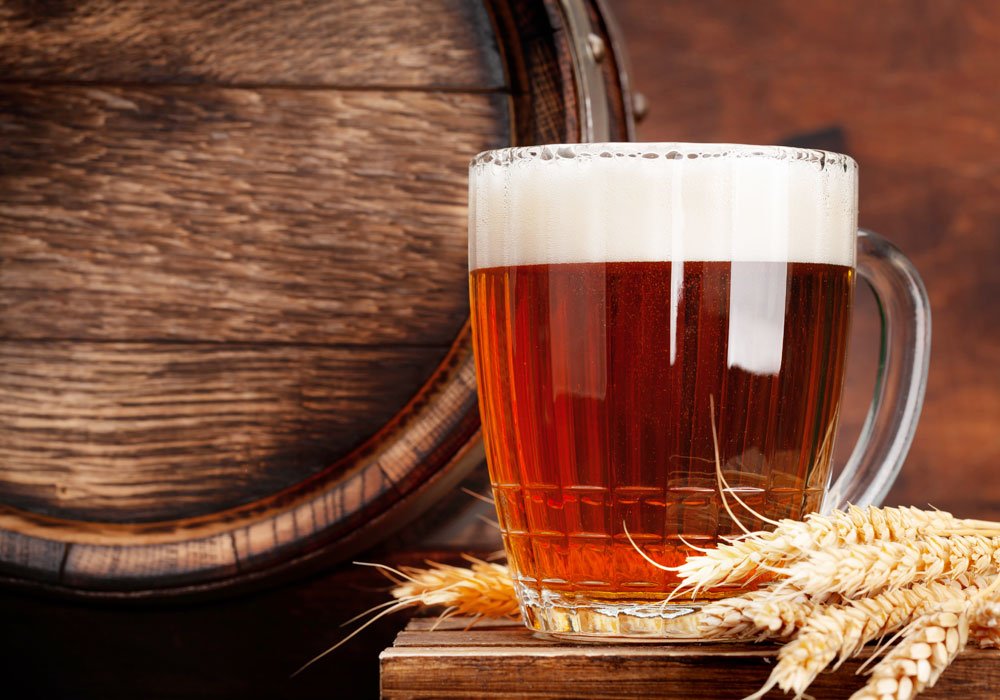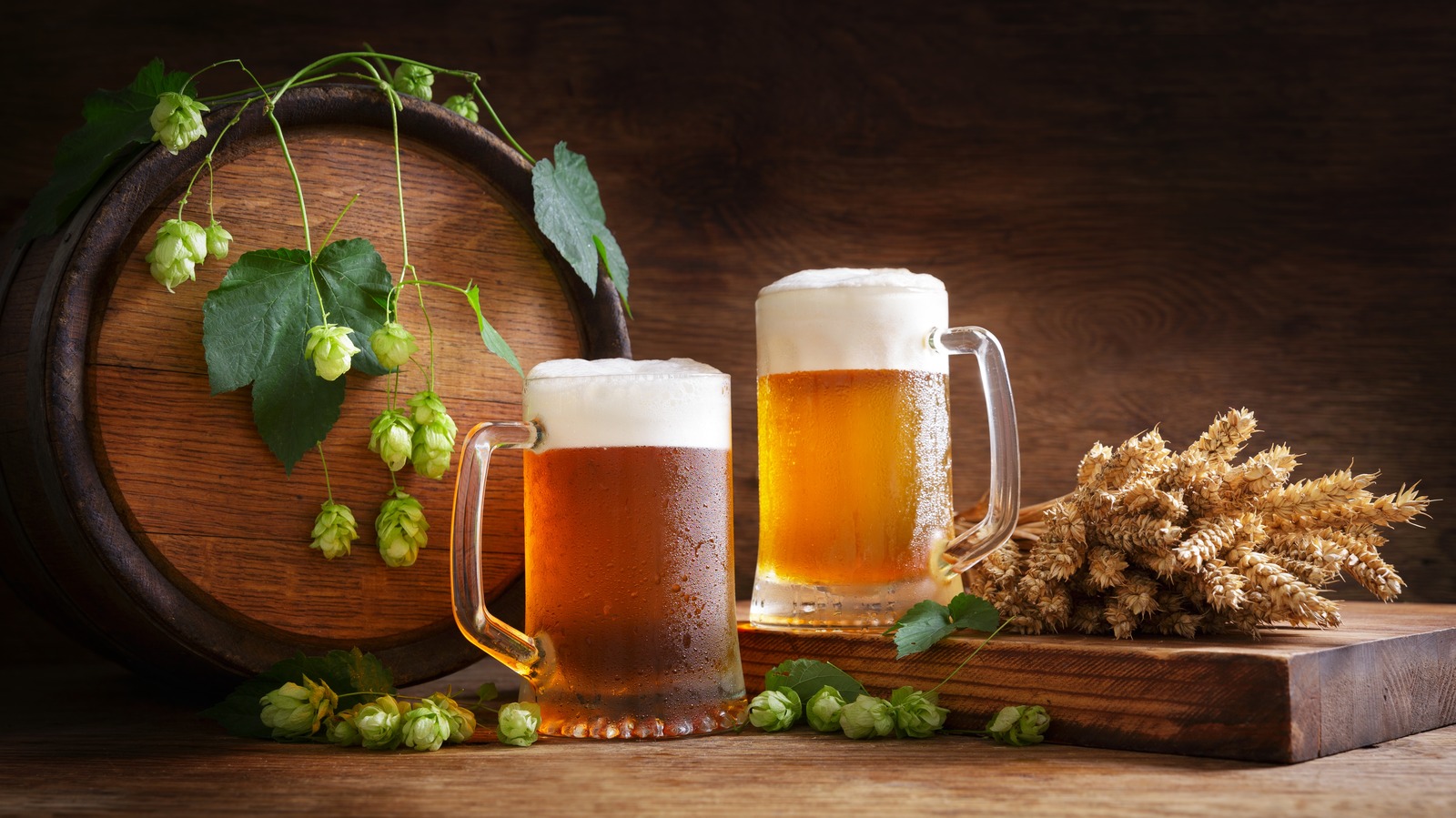Unlocking The World Of Ale: Styles, Flavors & More!
Is it the complex dance of fermentation, the nuanced profiles of different yeast strains, or the sheer historical weight of tradition that makes ale so captivating? Ale, a beverage deeply woven into the fabric of human history, continues to fascinate, delight, and spark debate among enthusiasts and casual drinkers alike.
From its humble beginnings in ancient civilizations to its current status as a global phenomenon, ale offers a remarkable journey through time and taste. Its story is one of evolution, innovation, and a persistent appeal that transcends generations. Ale, often described as a style of beer brewed using a warm fermentation method, distinguishes itself through the yeast used in the brewing process, contributing to its unique flavor profiles and character. Unlike its crisper lager counterpart, ales generally exhibit richer, more complex flavor characteristics, often displaying fruity notes that are the result of this fermentation style.
This particular beer style can boast an impressive range of colors, tastes, strength, and ingredients that make it stand out from its larger counterpart. Beyond the basics, the world of ale is a vast and diverse landscape, comprising numerous sub-styles, each with its own unique characteristics. This includes the robust stouts and porters, the hoppy IPAs, and the lighter, more delicate pale ales. Each style provides a different experience, making the journey of discovering and understanding ale a never-ending exploration of the pleasures it has to offer.
The evolution of ale is a compelling narrative of human ingenuity. Early brewing methods, born out of necessity and limited resources, have evolved into the sophisticated techniques we see today. Examining the etymology, the historical context, and the modern production methods reveals the story of ale, not only as a beverage, but as a reflection of cultural and culinary practices.
The primary mission of alcohol law enforcement (ALE) is to proactively enhance community safety by reducing criminal activity at both licensed and illegal alcohol establishments. In some regions, the ALE is the lead enforcement agency for the state's alcoholic beverage control, lottery, and tobacco laws. This highlights the importance of responsible practices and the role of ale in maintaining community well-being.
The Kentucky Ale, for example, exemplifies the craft and dedication that goes into creating a unique brew. Aged in freshly decanted bourbon barrels from Kentucky's finest distilleries, it gains subtle, yet familiar flavors of vanilla and oak. These nuances are imparted during its rest in the charred barrels, showcasing the commitment to producing quality that can elevate the drinking experience.
The world of ale is also one of constant exploration, with new interpretations and flavour combinations emerging regularly. Breweries worldwide are constantly innovating, experimenting with new ingredients and methods to create a diverse range of ales to suit every palate. This continuous evolution ensures that ale remains a dynamic and engaging area for exploration, providing new discoveries for seasoned enthusiasts and newcomers.
For those looking to find a specific ale, resources such as "Total Wine & More" are available. Providing a wide selection of wine, spirits, beer, and accessories, they cater to the diverse needs of enthusiasts. Whether you are looking for Kentucky Ale or exploring other options, such sources help consumers find their ideal choices.
The history of ale is intertwined with the history of human civilization, with its origins tracing back thousands of years. Ale was a staple in ancient cultures, serving not just as a beverage but also as a source of nutrition and a means of social interaction. The methods of brewing, the ingredients used, and the appreciation for ale have evolved over time, reflecting the cultural evolution of human society.
The importance of ale extends beyond its consumption, influencing various aspects of human life. It played a significant role in medieval culture and cuisine, shaping social gatherings, rituals, and even the diets of people. Understanding the broader role of ale in history reveals its cultural significance and its impact on society.
In understanding the world of ale, it is crucial to compare and contrast it with other fermented beverages, like beer. Beer, lager, and ale are all produced from ingredients and yeast, but differ substantially in flavor, appearance, and alcohol content. By learning about the unique fermentation process, yeast types, and the types of ales, one gets an in-depth comprehension of their characteristics and what they mean to the overall taste.
One should understand the critical differences between beer and ale. It is beneficial to learn about beer and ale, and how they are made from different ingredients and yeast, and how they vary in flavor, appearance, and alcohol content.
Venturing beyond the realm of ale, one may come across Vernors, the oldest surviving ginger ale in the United States. This beverage, first served to the American public in 1866, offers a refreshing alternative. The Vernors Company Building in Toledo, Ohio, is a historic landmark.
It is a diverse and ever-changing landscape. It is a constant quest for new experiences and flavors. It's a testament to how human ingenuity and passion can converge to create beverages that continue to captivate and inspire.
In conclusion, the allure of ale lies in its complexity, its diversity, and its rich historical heritage. It is a beverage that invites exploration, promising a journey of discovery for both the seasoned connoisseur and the curious beginner. So, the next time you encounter an ale, take a moment to appreciate its storya tale of innovation, tradition, and the enduring appeal of a timeless classic.
| Category | Details |
|---|---|
| Definition | A style of beer brewed using a warm fermentation method, typically with or without hops. It is defined by the yeast used in the fermentation process. |
| Fermentation | Warm fermentation process, which often results in faster fermentation times. |
| Yeast | A specific strain of yeast, often producing fruity esters and other flavor compounds. |
| Flavor Profile | Generally more flavorful than lagers, characterized by fruit flavors, such as apple, pear, and banana. Some styles exhibit more complex flavors, derived from ingredients and aging. |
| Types of Ales | Pale Ales, India Pale Ales (IPAs), Stouts, Porters, Brown Ales, Belgian Ales, Wheat Ales, etc. |
| Alcohol Content | Typically ranges from 4% to 12% ABV or higher, depending on the style. |
| Ingredients | Water, malted grains (primarily barley), hops, and yeast. Other ingredients like fruits, spices, and adjunct grains may be added. |
| History | Ale brewing dates back to ancient times, predating the use of hops in beer production. It has a rich history intertwined with cultural and culinary practices. |
| Food Pairings | Varies widely based on the specific ale. Pale ales pair well with lighter dishes, while stouts and porters complement richer foods. |
| Notable Examples | India Pale Ale (IPA), Stout, Porter, Bitter, Pale Ale, Brown Ale, etc. |
For more information on the diverse world of ales, consider visiting: Example.com (This is a Placeholder)
Beyond the brewing process and the enjoyment of the final product, ale also plays a role in law enforcement, especially when it comes to alcoholic beverages. In many jurisdictions, the agency responsible for regulating alcoholic beverages and enforcing related laws is the Alcohol Law Enforcement (ALE).
Ale is the lead enforcement agency for the state's alcoholic beverage control, lottery, and tobacco laws. Their responsibilities are wide-ranging. They ensure compliance with regulations, investigate violations of laws, and strive to maintain public safety by minimizing the problems that could arise from the use of alcoholic beverages and other controlled products.
The enforcement of these laws goes hand-in-hand with the broader community and safety initiatives. ALE agencies are involved in reducing criminal activity at both licensed and illegal alcohol establishments, with the aim of maintaining public safety. This mission is often carried out through proactive measures, such as checking establishments and educating the public on the responsible use of alcohol and tobacco.
This proactive approach helps keep the public safe and decreases potential for negative consequences. These actions are part of a multifaceted approach. This ensures that the benefits of the industry are available to everyone, while safeguarding the community.
The evolution of ale, its brewing techniques, and the cultural importance of ale have led to the evolution of a broad and intricate world. The flavors, fermentation methods, and ingredients are all part of what makes ale such an engaging and enjoyable beverage, and it's a journey that provides a continuous source of discovery for any curious drinker.
The ale brewing world is an area of both tradition and innovation. From the use of warm fermentation methods to the diverse types of ales that have developed over the years, ale continues to capture the interest and interest of both the connoisseur and the casual observer.



Detail Author:
- Name : Dr. Lincoln Aufderhar
- Email : ariane.pacocha@hotmail.com
- Birthdate : 1972-06-13
- Address : 4841 Lueilwitz River Mariebury, MO 69407-8936
- Phone : +16805109880
- Company : Mosciski Inc
- Job : Budget Analyst
- Bio : Quo impedit quae tempora modi voluptas consequatur eius. Expedita nesciunt totam atque. Et est inventore veritatis est.